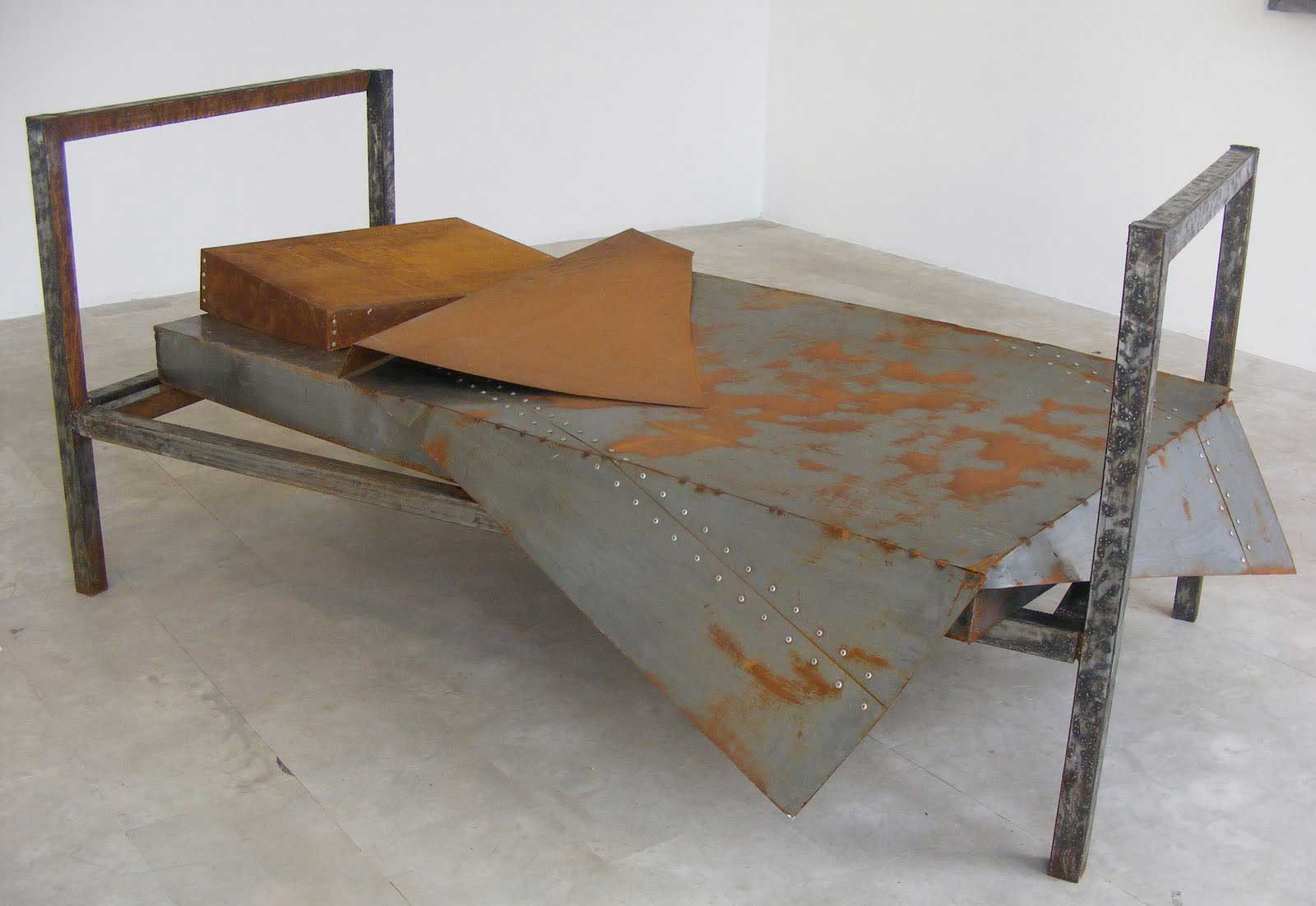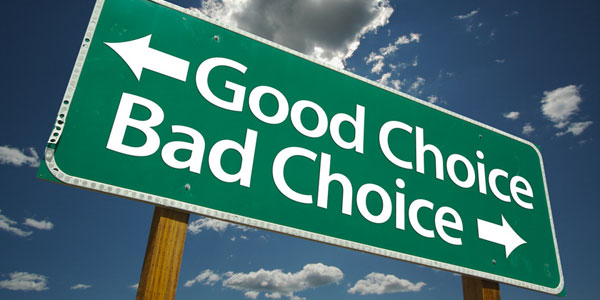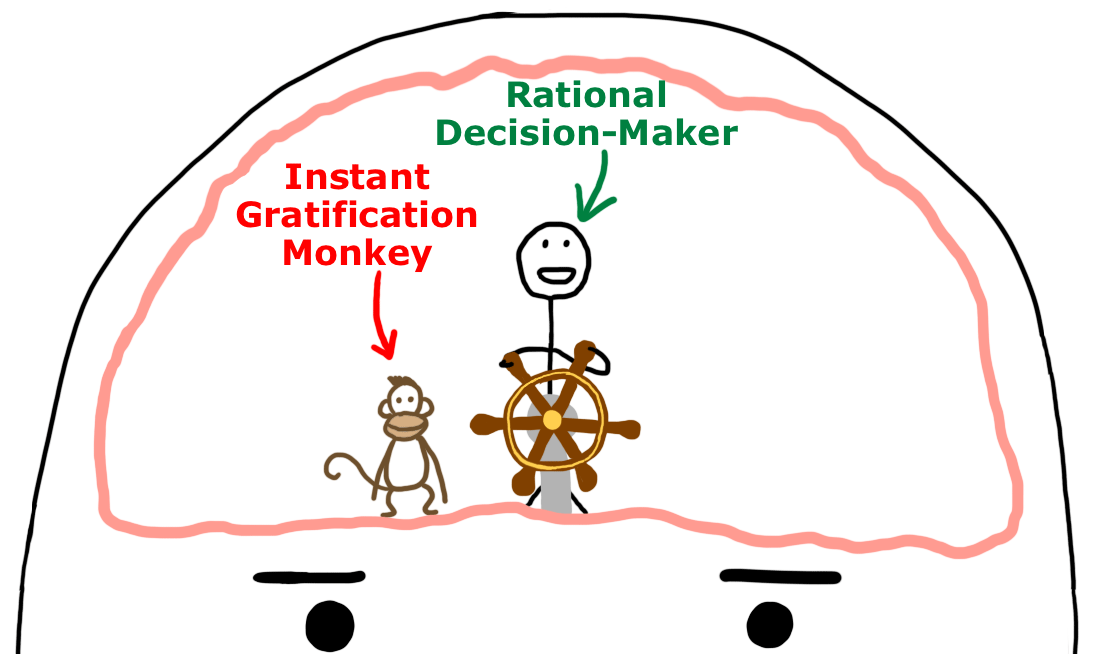
I Want You To Be Uncomfortable.

Imagine yourself in the following situation: You wake up at 7am on your memory-foam mattress. You realize it’s Saturday and take a breath of relief. You don’t have any obligations today - your schedule is pristine. You can choose between a healthy plan for your day or no plan. Which do you choose?
Healthy Day
- Get out of bed immediately
- Eat a healthy breakfast
- Exercise
- Do literally anything productive or enriching to your life in the long-term
Unhealthy Day
- Pull up the covers and just lay there for a while
- Read Facebook and Reddit on your phone
- Microwave a frozen meal
- Watch Netflix for a couple hours, then YouTube
- Order pizza for dinner
- Play video games alone late into the night
Now imagine you’ve just lived one of these two days. Which one would make you happier?
“Now wait,” you might say, “This question is insulting and you should be ashamed. Obviously if I were to look back on a well-spent day, I would be proud of myself, and if I were to look back on a poorly-spent day I would probably hate myself. But nobody just chooses to spend their day poorly, it happens as a result of complex and poorly-understood things like motivation, procrastination, and self-worth.”
I can’t really argue with that, though I do take objection to the idea that you should hate yourself for falling into a “zero day” pattern that is so common and easy to be trapped by. No, the main thing I want to get across is that a decision of how you spend your day isn’t really a single decision, in reality it is the sum of thousands of moment-to-moment decisions that you make throughout the day, both consciously and subconsciously.
For example the decision between the healthy day and the unhealthy day really kicked off with the split-second decision of whether to embrace the bed and the facebook feed, or to embrace those cold, miserable, lonely few seconds between getting out of bed and getting dressed. The difference between the start of the healthy day and the start of the unhealthy day was the split-second decision of whether to embrace comfort, or to embrace discomfort.
Why Discomfort?

There is a reason that mother nature gave us the sensation of discomfort. Often, discomfort is a warning signal that something bad is about to happen. This is discomfort working at its best. If you suddenly feel a lot of discomfort in a dark alleyway, it might prompt you to check your surroundings carefully and prepare a plan to escape from a potential mugger. Likewise if you suddenly feel discomfort while driving, it might prompt you to realize you are being tailgated and should pull into the other lane. In both cases, your subconscious feeling of discomfort signals a potential danger to your conscious mind, so that your logical reasoning system kicks into action and you create a plan to avoid danger. Here are some more ways that discomfort helps us avoid dangerous situations:
- To avoid the danger of starvation, your mind warns you with the discomfort of hunger.
- To avoid the danger of being eaten by a wild animal, your mind warns you with the discomfort of fear.
- To avoid the danger of falling off a cliff, your mind warns you with the discomfort of vertigo.
- To avoid the danger of throwing out your back, your mind warns you with the soreness you get after sitting a weird way on the couch.
When this system works, it acts as an invaluable safety mechanism that keeps us alive and healthy. However as modern life continues to diverge from the life we lived throughout most of our evolution, the discomfort system starts to break down around the edge cases. For example:
- To avoid social ostracism, your mind warns you with social anxiety whenever you meet someone new – This programming is kind of outdated. The majority of social interactions in today’s society cannot result in injury or death.
- To avoid burning calories and therefore starvation, your mind warns you with discomfort whenever you exercise. – This also doesn’t make sense in modern society because calories are so abundant.
- To avoid burning calories by digesting vegetables which are low in the macronutrients fat, carb and protein, your mind nags you to eat pizza or potato chips instead. – Again, outdated firmware. Fat, carbs and protein used to be very scarce in the wild, so we developed a taste for them so as to not be deficient. Nowadays it’s much more common to be deficient in the micronutrients found in vegetables, which we generally are unable to taste.
As a final example, in an attempt to avoid burning too many calories, your mind warns you with discomfort when you are cold. This is part of what makes it hard to get out of bed in the morning. When you feel the cold air next to your bed, your subconscious mind says “Don’t go out there, we will burn precious calories in the cold and in the process of exerting ourself. Instead, let’s stay in the warm bed and brain-snack on some Facebook.”
Of course that subconscious line of reasoning is kind of dumb, we don’t really want to stay in bed all day do we? In this case and others in our life, discomfort is obviously working against our best interests. For this reason it is valuable to study discomfort, to understand what it is and how it works, to know the source of its power, and lastly and most critically, how to push through it when it gets in the way of what we know is best for us.
Discomfort is a bully

The first thing you should know about discomfort is that discomfort is a bully. Discomfort would like you to think it is hot shit, that it calls the shots and that you better listen to it. Discomfort likes to get loud and in-your-face - it likes to scream at you until you roll over and do its bidding, but its dirty little secret is that if you call its bluff, you will realize that discomfort itself usually can’t physically block you from doing something.
Aside from extreme instances such as in PTSD, discomfort itself cannot hurt you. That’s not to say we should ignore discomfort - it works as a good rule-of-thumb for danger in a lot of cases. But next time your discomfort is caused by something that you know is actually beneficial to you, like moderate exercise, imagine the discomfort as a drill instructor shouting square in your face to stop exercising and sit down. With enough practice - enough instances in which you choose to embrace discomfort for the sake of your health - in the face of discomfort you can become like the recruit who stands there stone-faced and unflinching as the drill instructor reams them out.
Comfortable with discomfort

I’ve had a lot of discomfort in my life, and if you are a human being, you may have had a lot of discomfort too. I want to share with you something that caused a great deal of discomfort in my life. Three years ago, with an affliction that would much later be diagnosed as a chronic sinus infection, toxic mold exposure, and obstructive sleep apnea, I became so sick that every moment was painful, and existence itself felt very uncomfortable. Now, I was not quite on the same level as the guy who can’t move anything but his face, but to me, a college graduate from a loving family, this experience brought more pain and confusion than I had ever felt in my life. And as I was treated for a misdiagnosis, my condition progressed. If you can imagine what it would be like to begin going insane while experiencing deep depression, paranoia and insomnia, you will get an idea of how uncomfortable it was.
The illness was finally diagnosed, and my health began to slowly improve again. As I began to feel better, the depression lifted, and I began to feel comfortable in my mind again.
A few months after that, I came to wonder if I have already hit “peak discomfort” in my life. I couldn’t imagine that any future day could be as difficult as the day that I woke up disoriented after a 13 hour night of gasping in my sleep, inhaling toxic mold and having terrible nightmares. I couldn’t imagine that any future evening would be as difficult as the night I lay in bed confused and shaking, my heart racing and palpitating, while listening to music to try and keep myself grounded. To survive that period of my life, I necessarily had to reassess my relationship with discomfort.
One person who helped me assess this relationship with discomfort was my therapist, who at that very trying time in my life helped me unravel the connection between my emotions and my body sensations. She taught me that it is okay and even helpful to cry, that it is okay to feel whatever you feel, that it is okay to be in whatever state you are in. By use of the Hakomi method, she helped me more fully explore the present moment, with all the feelings, and all the gross and subtle body sensations it entails.
I frequently arrived at her office in some sort of mild to moderate discomfort. My breathing was often a little labored, I always had a nagging head pressure due to the sinusitis, and my heart would often feel like a lead weight beating in my chest. In our sessions I was to sit and be present with my body sensations for a few quiet minutes, then describe them to her using adjectives such as “warm”, “cold”, “sharp”, “dull”, “pressure”, “constricted”, or “relaxed”. We didn’t call it discomfort so as not to label it and separate it from comfort. Instead, we practiced noticing sensations in my body without judging them as good or bad and without labeling them as comfort or discomfort, instead putting them all in the same basket. From her I learned that discomfort is just an experience, and most of its power comes from the way we label it and try to avoid it.
By seeing discomfort as “just another experience”, it lost some of its pull on me. Now, I have a more relaxed relationship with discomfort, and at times can even rejoice in my tolerance for it. See a huge donut at a cafe? I get a power trip now from choosing not to eat it. Feel bad while exercising, but I know I’m not overdoing it? Then sorry body, but it’s time to lay on that discomfort for the greater good. Meeting someone new? I’m ready for my face to flush and my heart to start racing, I’m prepared so bring it on. Hungry? Well, that’s actually the kind of discomfort I listen to - I eat up, because I’m a skinny guy and that’s the healthy thing to do. Because I love myself, I subject myself only to beneficial discomforts - there’s no sense in seeking out discomforts that don’t improve my life for having experienced them.
How to choose discomfort

Hopefully I have at least convinced you that being uncomfortable is beneficial in some areas of your life. But you may still be stuck wondering how to make the choice in practice to embrace discomfort. If we go back to the bed example, what is the actual thought process, what is the practical mechanism to use when you know you should get out of bed but it feels so much easier to pick up your smartphone instead? People smarter than you and I have been thinking about this.
One lady figured out that to get herself to do things, she basically just needed to brute force it. When you try to get out of bed, she says, “you will come face-to-face with the physical, and I mean PHYSICAL, force that’s required to change your behavior.” Later in the talk, she wraps it up by saying “your soul needs exploration and growth, and the only way you’ll get it - is by forcing yourself to be uncomfortable.”
Another guy figured out that to get himself to do things, he needed to construct a gratitude cycle of forgiving his past self and being a bro to his future self. The person asking him for advice even has the same first name as me. Here is an excerpt from his post:
Rule numero uno - There are no more zero days. What’s a zero day? A zero day is when you don’t do a single fucking thing towards whatever dream or goal or want or whatever that you got going on. No more zeros. I’m not saying you gotta bust an essay out everyday, that’s not the point. The point I’m trying to make is that you have to make yourself, promise yourself, that the new SYSTEM you live in is a NON-ZERO system. Didnt’ do anything all fucking day and it’s 11:58 PM? Write one sentence. One pushup. Read one page of that chapter. One. Because one is non zero. You feel me? When you’re in the super vortex of being bummed your pattern of behaviour is keeping the vortex goin, that’s what you’re used to. Turning into productivity ultimate master of the universe doesn’t happen from the vortex. It happens from a massive string of CONSISTENT NON ZEROS…
No More Zero Days by Redditor ryans01
Yet another dude figured out that to get himself to do things, he had to create a framework to explain why he couldn’t get anything done that he wanted to. This framework involved a an “instant gratification” monkey, a monster, and a dark and very much un-fun playground:
pro-cras-ti-na-tion |prəˌkrastəˈnāSHən, prō-| noun the action of delaying or postponing something: your first tip is to avoid procrastination.
Who would have thought that after decades of struggle with procrastination, the dictionary, of all places, would hold the solution.
Avoid procrastination. So elegant in its simplicity.
While we’re here, let’s make sure obese people avoid overeating, depressed people avoid apathy, and someone please tell beached whales that they should avoid being out of the ocean…
This guy didn’t figure out discomfort until a devastating moment with his boss, where he was fired from his 6-figure job. He urges the audience to reconsider their relationship with discomfort: “What makes you comfortable can ruin you, and only in a state of discomfort can you continually grow.”
Personally, my own style is somewhat of a hybrid. When I have the thought that I should get out of bed, I ask myself very quickly “is there any good result that could come from staying in bed a bit longer”. Then when the answer is a “no”, I basically say to my body “sorry body, you are overruled in the name of health”, and before doing any more thinking or killing the impulse, I step out into discomfort. Then I realize that the discomfort is bearable and the rest of my day is better off for that small action of having gotten out of bed early. Finally, I thank myself for the action, and revel in the satisfaction that I was just able to do my future self a favor. In repeating this cycle numerous times throughout the day, the healthy day begins to build itself.
If you’re the kind of person who will read this article, say to yourself “hey that’s kind of cool, maybe I’ll try that sometime”, then bookmark the article and let it sit in your bookmarks folder with the 300 other bookmarks that you “are going to come back to someday”, I’d like to offer an alternate path of action.
I’ve just shown you four frameworks for getting up and doing something productive - there was the 5 second rule lady from TED, the “hook your future self up like a bro” guy from Reddit, the guy who lost his job with the rings of comfort, and finally there was the guy with the funny drawings of the monkey, monster and playground. My challenge to you is to pick the framework that most speaks to you and try it out today.
Remember, the difference between a healthy day and an unhealthy day is the sum of all your split-second choices between comfort versus discomfort. So when you come across that situation where the path to a healthier you is a path through discomfort, I encourage you to embrace the discomfort.
In short, I want you to be uncomfortable. Not to make your life worse, but to make your life better.
Photo Credits:
Stressed Man: Tom Lin, Creative Commons
Coyote and Roadrunner: Warner Bros.
Angry Drill Instructor: Cpl. Caitlin Brink/USMC
Uncomfortable Bed: Unknown
Good Choice / Bad Choice Sign: Unknown
